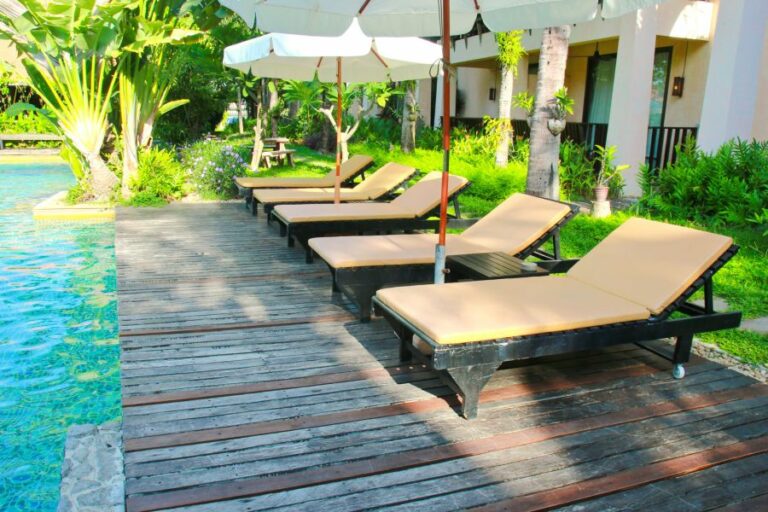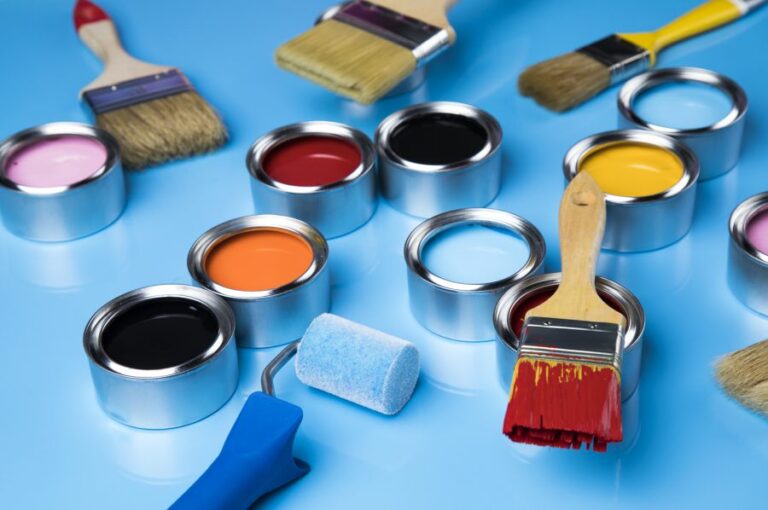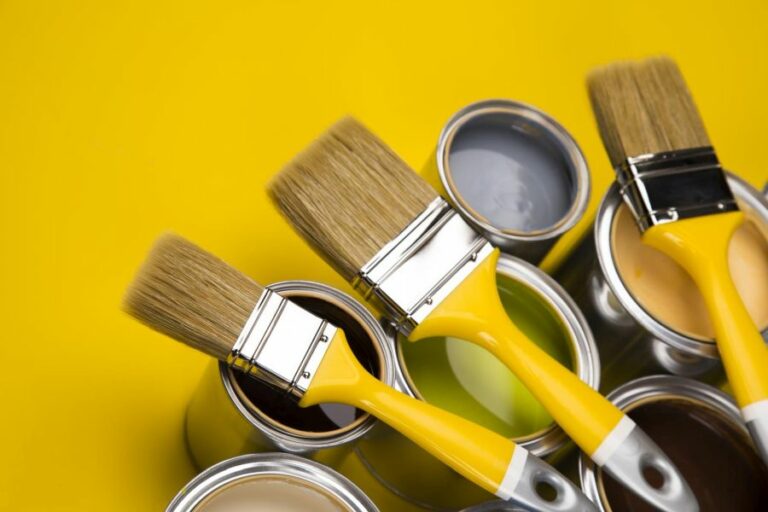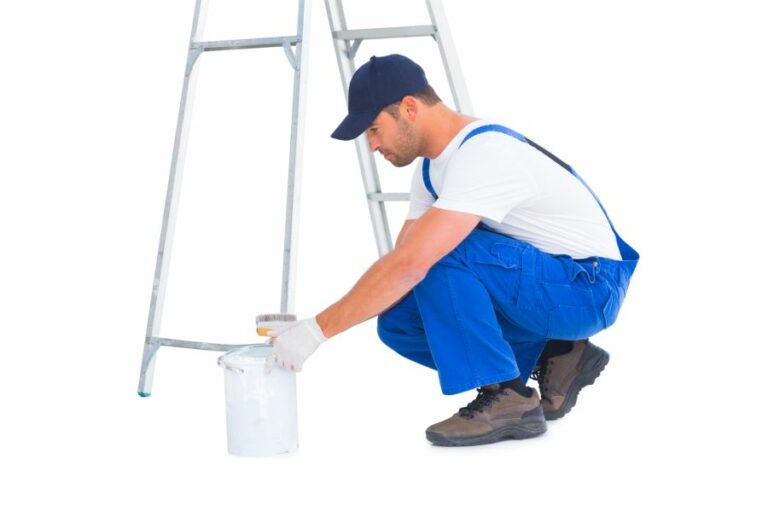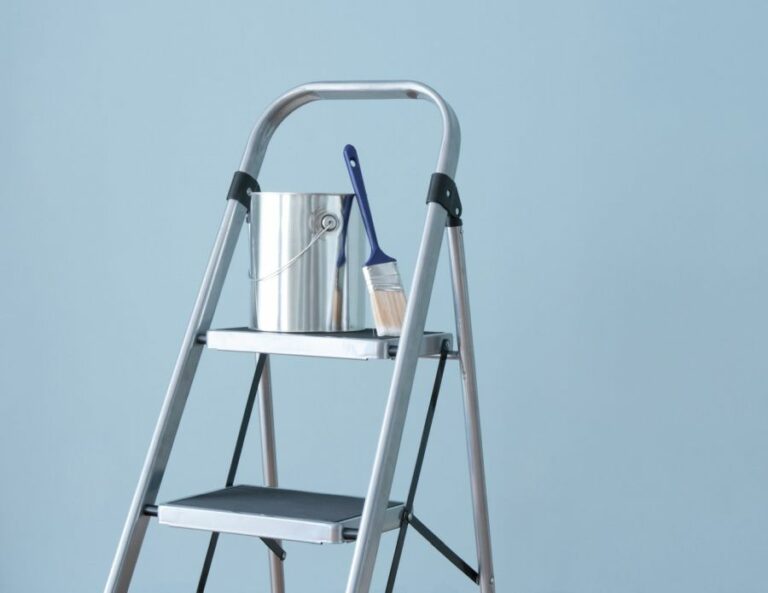Metallic Outdoor Paint, 25 Things You Should Know
Elevate the charm of your outdoor haven with the magic of metallic outdoor paint! In this blog post, we’ll delve into the world of shimmering finishes that not only provide an unmatched aesthetic appeal but also shield your surfaces from harsh weather conditions. Get ready to transform your patio furniture, fences, and garden ornaments into eye-catching statements that outlast the test of time.
Metallic outdoor paint:>
Choosing the right metallic outdoor paint is crucial for achieving a sophisticated and modern appearance. Consider the type of paint (acrylic-based, oil-based, spray, or eco-friendly) for specific applications and materials, and select a suitable color and finish. Proper surface preparation, including cleaning, degreasing, sanding, and priming, is essential for a successful application. Apply the paint using the appropriate tools and techniques, and follow the manufacturer’s instructions regarding drying time and safety precautions. To ensure a long-lasting finish, protect your project with a clear sealer or topcoat.

Discover the ideal metallic paint for your outdoor projects – whether it be furniture, garden decorations, or structures. Learn about the different types and finishes, paint application techniques, and weather resistance for a long-lasting, vibrant effect. Expert tips to ensure success awaits!
Contents
- 1 Outdoor Metallic Finish Paint
- 2 Is it Possible to Utilize Metallic Paint for Exterior Applications?
- 3 What is the Top-Quality External Metal Paint for Optimal Performance?
- 4 Is metallic paint resistant to water penetration?
- 5 What is the Most Durable and Resilient Exterior Metal Paint?
- 6 Does the Sun Cause Fading in Metallic Paint over Time?
Outdoor Metallic Finish Paint
• Choosing the Right Metallic Paint for Your Outdoor Projects
Metallic outdoor paint can add a touch of sophistication and modernity to a variety of surfaces. It’s important to select the right paint for your specific needs; there are many factors to consider when shopping for metallic exterior paint.
– Types of Metallic Paints
There are several types of metallic paints available on the market, each designed for specific applications and materials.
- Acrylic-Based Metallic Paints: These water-based paints are perfect for wood, plaster, or masonry surfaces. They are easy to clean up with water and offer good adhesion and durability.
- Oil-Based Metallic Paints: Oil-based metallic paints are more suitable for metal surfaces, as they provide excellent protection against rust and corrosion. However, they take longer to dry and may require specialized thinners and solvents for cleanup.
- Spray Metallic Paints: These paints are perfect for projects requiring quick application and even coverage. They are ideal for metal, plastic, or other smooth surfaces.
- Eco-Friendly Metallic Paints: If environmental impact is a concern, consider using eco-friendly metallic paints that have low VOC levels and are free of harsh chemicals.
– Selecting Color and Finish
Metallic outdoor paint comes in a wide range of colors and finishes, ensuring you can find the perfect one to complement your project.
- Color: Metallic paint colors range from classic gold, silver, and bronze to bold blues, reds, or greens. Consider the other colors in your outdoor space and choose a metallic color that complements or contrasts with the existing color scheme.
- Finish: Metallic paints are available in various finishes, including high-gloss, semi-gloss, and matte. Select a finish that matches the desired look and feel of your project.
• Preparing Your Surface for Metallic Paint
Proper surface preparation is essential for a successful metallic paint application. Failure to adequately prepare the surface can result in poor adherence and an unsatisfactory final appearance.
– Cleaning and Degreasing
Before applying metallic paint, all surfaces must be clean and free of dirt, dust, and grease. For metal surfaces, thorough degreasing with a suitable solvent or cleaner is recommended. For wood or masonry surfaces, a simple soap and water solution should suffice.
– Sanding and Priming
For optimal adhesion and a smooth finish, it’s important to sand and prime your surface before applying metallic paint.
- Sanding: Lightly sand the surface to remove any imperfections and create a smooth, even canvas for your paint. Use fine-grit sandpaper, and be sure to remove all sanding dust before moving on to primer.
- Priming: Applying a primer is essential for both metal and non-metal surfaces. It not only improves the adhesion of metallic paint but also enhances its color and overall finish. Choose a primer specifically designed for your surface material and follow the manufacturer’s instructions.
• Applying Metallic Outdoor Paint
Once your surface is clean, properly sanded, and primed, you can proceed with applying the metallic paint.
– Tools and Techniques
Choose the right tools for your specific paint and surface. Acrylic-based paints can be applied with a brush, roller, or paint sprayer, while oil-based paints may require a natural bristle brush. Spray metallic paints can be applied directly from the can.
Brush Application
For smaller projects or detailed work, a brush is the preferred method of applying metallic paint. Use a high-quality brush with soft bristles for an even, streak-free finish.
- Dip the brush into the paint, loading it with enough paint to cover the bristles evenly.
- Apply the paint in long, smooth strokes, following the natural grain of the surface.
- Allow the paint to dry according to the manufacturer’s instructions, and then apply additional coats as needed.
Roller Application
For larger surfaces, a paint roller can provide a more efficient and even application. Use a roller with a short nap for the best results.
- Load the roller with paint by rolling it into a tray or directly into the paint can.
- Apply the paint in a “W” pattern, working in sections and maintaining a wet edge.
- Allow the paint to dry, and apply additional coats if necessary.
Spray Application
Using metallic spray paint can save time and ensure an even, professional-looking finish.
- Shake the spray can thoroughly to mix and activate the metallic particles.
- Hold the can approximately 8-12 inches away from the surface, and apply light, even coats using a sweeping motion.
- Allow each coat to dry for the recommended time before adding additional coats.
• Tips for a Successful Metallic Paint Project
- Always read and follow the manufacturer’s instructions for your specific paint product.
- Perform a small test patch before applying the paint to a large surface.
- Use proper safety precautions, such as wearing gloves, masks, and protective eyewear.
- For the best results, apply metallic paint in a well-ventilated area, preferably during dry, mild weather conditions.
- Ensure proper drying time between coats and before exposing the painted surface to the elements.
- Protect your metallic paint project with a suitable clear sealer or topcoat, especially for surfaces exposed to harsh weather conditions or high-traffic areas.
By following these essential steps and tips, you can achieve a stunning, durable metallic paint finish for your outdoor projects.
Is it Possible to Utilize Metallic Paint for Exterior Applications?
When it comes to painting the exterior of your home, choosing the right paint is crucial. One of the most popular options that homeowners consider is metallic paint. But can you use metallic paint outside?
• Properties of Metallic Paint
Metallic paint is a type of paint that contains tiny metal particles, such as aluminum or mica, which create a unique, shimmering effect when applied to a surface.
This type of paint is often chosen for its decorative appearance and can be seen on many different types of surfaces, ranging from automotive finishes to furniture, artwork, and walls.
– Durability
One of the essential aspects of exterior paint is its ability to withstand the elements. Metallic paint tends to have excellent durability, offering long-lasting protection from sun, rain, and wind.
Additionally, metallic paint is often resistant to chipping, peeling, and fading. This long-lasting nature makes it an attractive option for many homeowners.
– UV Resistance
Another important factor to consider when choosing exterior paint is its UV resistance. Some metallic paints have increased UV resistance due to their reflective properties, which can help protect your home from the sun’s harmful rays.
This can be especially beneficial in regions that experience intense sunlight for a considerable part of the year.
• Benefits of Using Metallic Paint Outside
– Aesthetics
One of the main reasons homeowners choose metallic paint for their exteriors is its unique appearance. Metallic paint creates a distinct look that is both glamorous and sophisticated, adding an element of elegance to your home.
When the sunlight hits the surface, it reflects the shimmering effect, which can create a stunning visual impact.
– Customization
Metallic paints also offer a wide range of colors and textures, allowing you to create a truly unique exterior for your home. This can be a great way to add character and personality to your property, ensuring that it stands out from the rest.
– Easy to Clean
Exterior surfaces painted with metallic paint are relatively low-maintenance thanks to their durable and stain-resistant properties. In most cases, you can simply hose down the surface or gently scrub it with soap and water to remove dirt and debris.
This makes metallic paint an attractive option for busy homeowners who want to avoid time-consuming and labor-intensive maintenance tasks.
• Drawbacks of Using Metallic Paint Outside
– Cost
One of the main drawbacks of using metallic paint for your home’s exterior is its cost. Metallic paints are often more expensive than traditional latex or acrylic paints, which could make them less accessible for homeowners on a tight budget.
– Application
Applying metallic paint to exterior surfaces can be a time-consuming and challenging process. The paint needs to be applied in thin, even layers, which often require a skilled hand and specialized equipment.
Due to its unique consistency and reflective properties, achieving a flawless application can be difficult without prior experience. As a result, it’s often recommended to hire professional painters to handle the job.
– Visibility of Imperfections
Another disadvantage of using metallic paint outside is that it can emphasize any imperfections on your home’s exterior.
Due to the reflective nature of metallic paint, any bumps, dents, or uneven surfaces will be more visible once the paint is applied. It’s essential to make sure your home’s exterior is in good condition before you decide to use metallic paint.
• Recommendations
Based on personal experience, I recommend metallic paint for homeowners looking to achieve a unique and eye-catching exterior. It’s essential to consider the costs and challenges associated with the application process and to make sure your home’s exterior is in good condition before proceeding.
If you do decide to use metallic paint outside, I recommend opting for high-quality, UV-resistant paint to ensure it has the durability and longevity needed for an exterior surface.
It’s also a good idea to work with a professional painter who has experience applying metallic paints, as they will have the skills necessary to achieve a smooth, even finish.
In conclusion, metallic paint can be a suitable option for your home’s exterior if you’re looking to create a stand-out, elegant appearance.
By considering the benefits versus the drawbacks, as well as seeking professional assistance, you can achieve a beautiful and durable finish that will help make your home the envy of the neighborhood.
Question | Answer |
|---|---|
Can you use metallic paint outside? | Yes, but ensure that the paint is specifically designed for exterior use and follow the manufacturer’s recommendations. |
What is the Top-Quality External Metal Paint for Optimal Performance?
External metal surfaces often require strong and durable paint to protect them from the elements and keep them looking great for years to come.
• Top External Metal Paints
1. Rust-Oleum Protective Enamel
Rust-Oleum Protective Enamel is an industry-leading paint for external metal surfaces due to its impressive durability and resistance to rust.
Ideal for use on metal railings, fences, and gates, this paint not only provides long-lasting protection from corrosion but also offers great coverage and aesthetic appeal. Available in various colors and finishes, Rust-Oleum Protective Enamel can be used to achieve a professional look with ease.
Recommendation: As a professional with years of experience, I highly recommend Rust-Oleum Protective Enamel for projects where durability and rust resistance are priorities.
2. Hammerite Direct to Rust Metal Paint
Hammerite Direct to Rust Metal Paint is an excellent choice for protecting metal surfaces that are either rusty or prone to corrosion.
This paint can be applied directly onto rusted surfaces without the need for a primer, making it a convenient option for smaller projects or quick touch-ups. It dries quickly and hardens to form a strong, durable barrier against rust and corrosion, keeping your metal surfaces looking fresh and clean for years.
Recommendation: I strongly recommend Hammerite Direct to Rust Metal Paint for those looking to restore and protect rusty metal surfaces.
3. Krylon COLORmaxx
Krylon COLORmaxx is a versatile paint suitable for various materials, including metal, wood, plastic, and more. It offers excellent adhesion, durability, and color retention, making it an ideal option for large projects or those involving a mix of material types.
With a diverse range of colors and finishes available, you can achieve a professional and cohesive appearance across different surfaces using Krylon COLORmaxx.
Recommendation: Krylon COLORmaxx is my go-to choice when working on projects that involve a combination of the metal with other materials.
• Factors to Consider When Choosing External Metal Paint
1. Durability and Resistance
One of the primary factors to consider is the paint’s ability to withstand harsh weather conditions and protect against rust and corrosion. Look for paints with built-in protection against rust or those specifically designed for external use.
2. Application Process
Some paints can be applied directly onto metal surfaces, while others may require primers, multiple coats, or specific tools for best results. Consider the time and resources at your disposal and select a paint that matches your needs and experience level.
3. Finish and Aesthetics
External metal paints come in a variety of finishes, such as matte, gloss, and satin. Choose a finish that complements the overall aesthetic of your project or matches the existing materials.
• Tips for Applying External Metal Paint
1. Preparing the Surface
Proper surface preparation is crucial to achieve a long-lasting and professional-looking paint job. Clean the surface thoroughly to remove any dirt, grease, or dust, and scrape away any loose paint or rust.
2. Priming
Some external metal paints may require priming, which provides a suitable base for the paint to adhere to and improves its durability. Always follow the manufacturer’s instructions regarding priming to ensure optimal results.
3. Painting Techniques
Use appropriate tools and techniques such as brushes, rollers, or sprayers to apply the paint evenly and consistently according to the manufacturer’s guidelines. Apply multiple thin coats, allowing each coat to dry before applying the next one.
4. Drying and Curing
Allow the paint to dry and cure according to the instructions provided by the manufacturer. Drying and curing times may vary depending on the product and environmental conditions.
In conclusion, choosing the best external metal paint for your project depends on factors such as durability, application requirements, and desired aesthetics.
Rust-Oleum Protective Enamel, Hammerite Direct to Rust Metal Paint, and Krylon COLORmaxx are three top contenders that have been recommended based on personal experience.
By following the tips provided in this comprehensive guide, you can successfully protect and enhance the appearance of your metal surfaces for years to come.
Is metallic paint resistant to water penetration?
In many personal and professional applications, paint plays an essential role in enhancing and protecting surfaces. One popular type of paint, known for its shiny and reflective finish, is metallic paint. A common question arises when considering the use of metallic paint – is metallic paint waterproof?
• Properties of Metallic Paint and Waterproofing Abilities
The waterproof nature of paint largely depends on its composition, including its binder and additives. Most metallic paints are based on waterborne or solvent-based formulas, which differ in their waterproof capabilities.
– Waterborne Metallic Paint
Waterborne metallic paint is a type of paint that uses water as its primary solvent. It is eco-friendly, easier to clean up, and tends to have lower VOC (Volatile Organic Compounds) levels.
Waterborne paints are known for their excellent adhesion to surfaces and can provide decent durability and waterproofing capabilities.
However, these paints are generally not as robust as solvent-based paints and, therefore, might not offer the same level of resistance against water.
– Solvent-Based Metallic Paint
Solvent-based metallic paint, on the other hand, uses chemicals such as mineral spirits or acetone as a solvent. These paints are known for their versatility, durability, and strong resistance to water and external elements, making them more likely to be waterproof.
However, the primary downside of solvent-based paint is that it emits a higher level of VOCs and might be more difficult to clean up.
It is important to note that waterproof capabilities also depend on the substrate’s porosity and the paint’s thickness applied, as well as any additives or topcoats used. As such, no paint, whether it is waterborne or solvent-based, can claim to be completely waterproof.
• Ensuring Maximum Waterproof Performance
To attain the highest possible resistance against water, it is crucial to follow proper application methods and consider additional protection measures. Below are essential steps to ensure maximum waterproof performance when using metallic paint:
– Surface Preparation
The first step in achieving a waterproof metallic finish is to properly prepare the surface. Here is how to make sure that the surface is clean, dry, and free of imperfections:
- Clean the surface with a mild detergent and water solution, then rinse thoroughly.
- Allow it to dry completely before painting.
- Remove any existing paint or rust using a paint scraper or a wire brush.
- Repair any holes, cracks, or other imperfections with filler or caulk, and sand the surface to smoothen it.
– Priming for Water Resistance
Using a primer designed for water resistance can help boost the metallic paint’s waterproof abilities. Some primers contain additives such as water repellants, rust inhibitors, and alkali resistance properties, which contribute to the overall waterproofing effect.
Properly priming the surface using a compatible primer leaves the surface ready for painting.
– Applying the Metallic Paint
To improve the waterproof performance of metallic paint, it is crucial to apply the paint using the recommended techniques and following the manufacturer’s directions. This may involve applying multiple coats of paint and allowing appropriate drying time between coats.
– Using a Protective Topcoat
To further enhance the metallic paint’s waterproof capabilities, applying a protective topcoat is highly recommended. Many topcoats are specifically designed to protect the paint from water damage and other external elements.
Choosing a topcoat compatible with the metallic paint and applying it according to the manufacturer’s instructions will ensure an added layer of protection.
• How to Choose the Right Metallic Paint
When choosing metallic paint for your project, it is essential to consider the application type and environment the paint will be exposed to. Prioritize factors like water exposure, sun exposure, and required durability, and choose a metallic paint that fits your needs.
Additionally, always check the manufacturer’s specifications, which usually detail the paint’s waterproof capabilities and recommended application methods.
• Conclusion
In conclusion, whether metallic paint is waterproof largely depends on its composition and application methods. While waterborne metallic paints offer some water resistance, solvent-based paints provide stronger protection against water.
To ensure maximum waterproof performance, it is essential to prepare the surface, use a good primer, apply the paint as recommended, and protect it with a top coat. By following these steps and choosing the right metallic paint for your project, you can achieve a long-lasting and water-resistant finish.
What is the Most Durable and Resilient Exterior Metal Paint?
The world of exterior paints is vast, and when it comes to choosing the right paint for metal surfaces, it can be quite challenging. With various options available, it’s essential to select the best paint to provide unbeatable protection and long-lasting results.
• A Top Contender: Epoxy Paints
When it comes to durability and toughness, epoxy paints emerge as a top contender. Known for their ability to adhere to metal surfaces, epoxy paints form a strong bond, ensuring long-lasting protection against elements, corrosion, and overall wear and tear.
– Unique Features of Epoxy Paints
Epoxy paints offer several features, making them a popular choice among professionals and DIY enthusiasts:
- Exceptional Adhesion: Epoxy paints create a strong bond with metal surfaces, ensuring the paint stays intact despite harsh weather conditions and heavy use.
- Chemical Resistance: These paints protect metal surfaces against various chemicals that may lead to corrosion or damage.
- Abrasion and Impact Resistance: Epoxy paints can resist impacts and abrasions, reducing the chances of chipping and peeling.
- Aesthetic Appeal: Available in various colors and finishes, epoxy paints are an excellent way to add a touch of style to any metal project.
– The Application Process
To achieve the best results from epoxy paints, it’s crucial to follow these general steps:
- Surface Preparation: Make sure the metal surface is clean, dry, and free of any dirt, rust, or oil. Sand the metal with medium-grit sandpaper to create a rough surface for better adhesion.
- Priming: Apply a metal primer as per the manufacturer’s instructions. Primers help in providing an even base for paint application and prevent rust formation.
- Paint Application: Once the primer has dried, apply the epoxy paint to the metal surface using a brush, roller, or sprayer. Two coats are recommended, allowing the first coat to dry before applying the second.
- Curing: Allow the paint to cure completely, as recommended by the paint’s instructions. This usually takes at least 24 hours but could be longer, depending on the brand used.
• Polyurethane Paint: Another Great Choice
Polyurethane paint is another type of exterior metal paint known for its toughness and durability. It’s commonly used for industrial and commercial applications where long-lasting protection and resistance against various conditions are essential.
– Multiple Benefits of Polyurethane Paint
Several benefits come with utilizing polyurethane paint on metal surfaces:
- High Resistance: The paint provides high resistance to elements such as water and chemicals, ensuring excellent protection against rust, corrosion, and damage.
- UV Resistance: Polyurethane paint is UV resistant, which prevents fading and discoloration from direct sunlight exposure.
- Flexible and Durable: This type of paint is flexible and adapts to the expansion and contraction of metal surfaces resulting in increased durability and longevity.
- Attractive Finishes: Polyurethane paint is available in various finishes and colors, giving you aesthetic flexibility when selecting the perfect shade for your metal surface.
– Steps to Apply Polyurethane Paint
For the optimal application of polyurethane paint, follow these simple steps:
- Surface Preparation: Clean the metal surface, removing any dirt, grease, or rust. An abrasive pad or sandpaper can be used when necessary to ensure a clean surface.
- Priming: Use a metal primer designed for polyurethane paints to create a solid foundation for your paint job.
- Paint Application: Apply the polyurethane paint using a brush, roller, or sprayer. As a general rule, two or more layers should be applied for maximum durability.
- Drying and Curing: Allow adequate drying time between coats, and let the surface cure after the final layer has been applied, per the paint’s instructions.
• Tips for the Best Results
Regardless of the exterior metal paint chosen, here are a few tips to ensure a successful outcome:
- Always prepare the surface thoroughly. This is key to achieving great adhesion and preventing rust formation.
- Select a high-quality paint and primer designed for metal surfaces.
- Patience is vital. Allowing the paint to dry and cure as recommended can make a significant difference in the overall quality and durability of the paint job.
- Choose paint with UV protection to prevent fading, especially if the metal surface is exposed to sunlight for prolonged periods.
• Final Thoughts
Determining the toughest exterior metal paint ultimately boils down to specific requirements and preferences. Epoxy and polyurethane paints remain strong contenders, each with its unique features and benefits, ensuring longevity and durability on your metal surfaces.
By following the proper application steps and tips, you can achieve an impressive finish that not only looks great but offers unbeatable protection for your metal projects.
Does the Sun Cause Fading in Metallic Paint over Time?
• Understanding Metallic Paint
Metallic paint, commonly used for automotive finishes, consists of tiny metal flakes suspended within the paint mixture. The addition of these metal flakes gives the paint a distinct, sparkling appearance that changes under different lighting conditions.
This unique visual quality makes metallic paint a popular choice among those looking to make a statement with their vehicles.
• Factors Affecting the Fading of Metallic Paint
While metallic paint is lauded for its visual appeal, concerns have arisen regarding its durability. Specifically, the question of whether metallic paint fades in the sun is an important one for car owners to consider. There are several factors that can contribute to the degradation of metallic paint.
– Exposure to UV Rays
Much like any other material, metallic paint can be compromised after prolonged exposure to ultraviolet (UV) rays from the sun. UV radiation is known to break down the chemical bonds in paint, leading to a gradual loss of color and shine. Over time, this can cause the paint to look dull or faded.
– Paint Quality
The quality of the metallic paint can greatly affect its resistance to fading. High-quality paints that have been properly formulated with UV inhibitors and stabilizers are more resistant to sun damage.
Additionally, the size and distribution of the metal flakes within the paint can play a role in the rate at which it fades. Larger or more unevenly distributed flakes may actually accelerate fading as they can create areas of uneven exposure to the sun.
– Environmental Factors
Aside from sun exposure, several other environmental factors can play a role in the fading of metallic paint. Acid rain, airborne pollutants, and bird droppings can all react with the paint’s surface, leading to a loss of color and shine.
In addition, frequent exposure to abrasive materials such as sand and road salts can also contribute to fading by wearing away the protective clear coat applied over the metallic paint.
• Tips for Protecting Metallic Paint from the Sun
There are several actions that can be taken to help protect metallic paint from the sun and ensure its long-term durability.
– Regular Washing
One of the simplest and most effective ways to protect metallic paint from fading is through regular washing. By keeping the surface of the paint clean, you minimize the potential for environmental contaminants to cause damage.
I recommend washing your vehicle at least once every two weeks or more frequently if it is exposed to harsh environmental conditions. Be sure to use a high-quality car wash soap and microfiber mitt to avoid causing damage to the paint.
– Waxing and Sealing
Waxing and sealing the paint can both provide an additional layer of protection against UV rays and environmental contaminants. Car wax commonly contains UV inhibitors that help to shield the metallic paint from sun damage, while paint sealants offer longer-lasting protection.
It is advisable to apply high-quality car wax or sealant at least every three to six months, depending on your vehicle’s exposure to sunlight and other environmental factors.
– Parking in the Shade
Whenever possible, parking your vehicle in a shaded area will greatly reduce its exposure to UV radiation. This can be especially helpful during peak sunlight hours when the sun’s rays are at their strongest.
If shaded parking is not an option, consider investing in a high-quality car cover that provides UV protection. Alternatively, a windshield sunshade can be used to protect the dashboard and interior surfaces from damage.
– Regular Inspection
Performing regular inspections of your vehicle’s paint can help to identify early signs of fading or damage. Check for any signs of peeling or cracking, as well as areas where the paint appears to be thinning.
Addressing these issues early on can help to prevent further sun damage and maintain the appearance of your metallic paint.
• In Conclusion
While metallic paint is not immune to fading in the sun, taking the proper precautions and care can greatly extend its lifespan and preserve its appearance.
Regular washing, waxing, and inspection, as well as parking in the shade when possible, are all key steps that can be taken to ensure the durability of your vehicle’s metallic paint. By taking proper care of your car’s exterior, you can feel confident that its vibrant, sparkling finish will remain intact for years to come.

